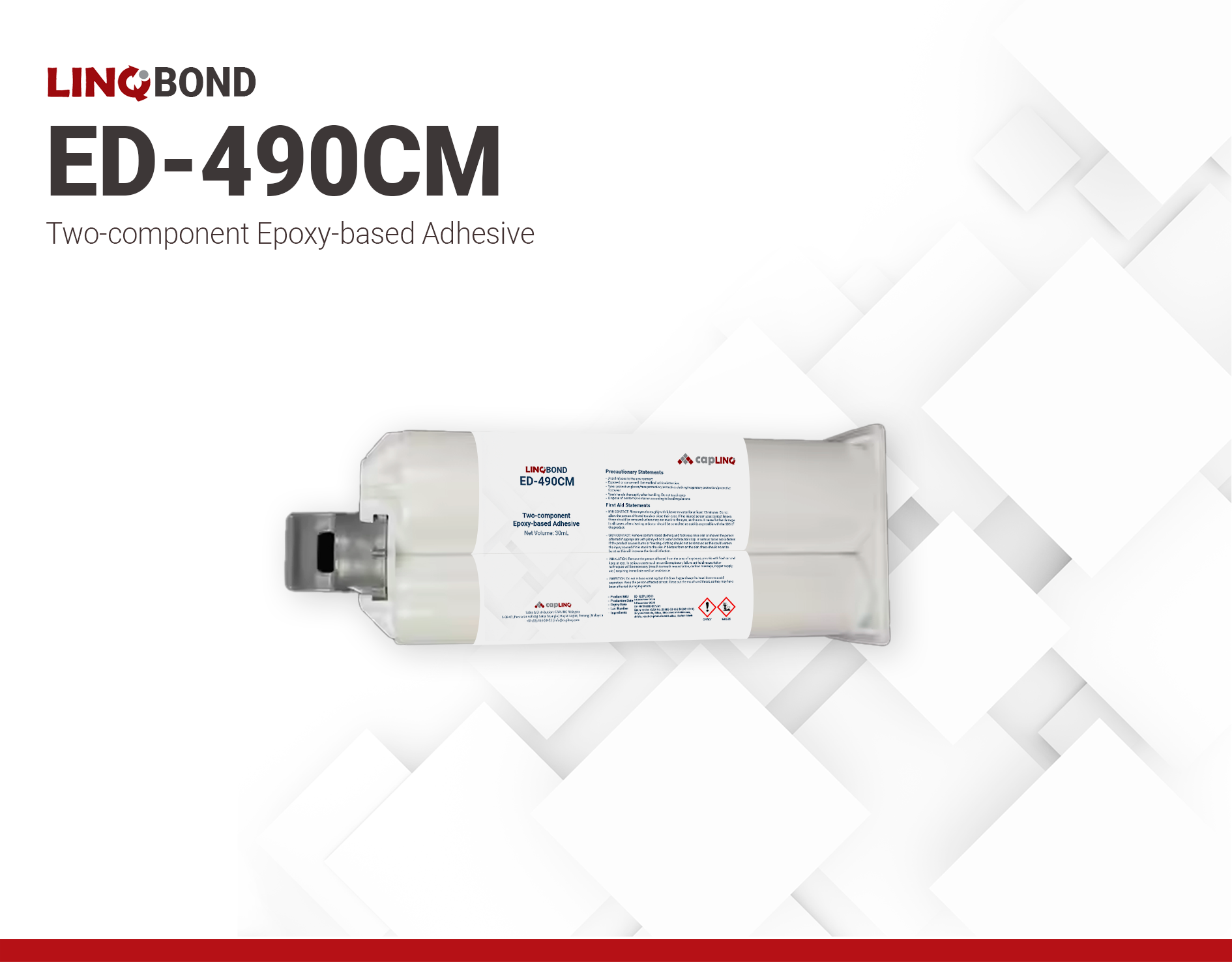ED-490CM | Two-part Epoxy Adhesive for Casting & Bonding
- Excellent toughness
- Reliable in humid conditions
- Low thermal stress
Product Description
LINQBOND ED-490CM is a high-performance, two-component epoxy adhesive designed for rapid curing at low temperatures making it ideal for fast-paced manufacturing processes. Its easy handling and excellent adhesion to various substrates streamline application without compromising on durability. With high toughness, low thermal stress, and superior thermal shock resistance, LINQBOND ED-490CM provides strong, resilient bonds even under temperature fluctuations. It also offers reliable electrical insulation under high humidity, making it well-suited for electronics and moisture-prone settings.
The hardener in LINQBOND ED-490CM is specially formulated to prevent the formation of insoluble white solids when exposed to air, and the cured adhesive maintains a smooth, glossy, oil-free finish.
Key Features:
- Durable: Exhibits excellent toughness, low thermal stress, and exceptional resistance to thermal shock.
- Reliable Electrical Insulation: Maintains outstanding electrical insulation properties, even under high humidity conditions.
- User-Friendly Hardener: The hardener is formulated to resist forming precipitates upon air exposure.
Technical Specifications
| General Properties | |
| Specific Gravity Specific Gravity Specific gravity (SG) is the ratio of the density of a substance to the density of a reference substance; equivalently, it is the ratio of the mass of a substance to the mass of a reference substance for the same given volume. For liquids, the reference substance is almost always water (1), while for gases, it is air (1.18) at room temperature. Specific gravity is unitless. | 1.57 |
| Electrical Properties | |
| Surface Resistivity | 5e14 Ohms/sq |
| Volume Resistivity Volume Resistivity Volume resistivity, also called volume resistance, bulk resistance or bulk resistivity is a thickness dependent measurement of the resistivity of a material perpendicular to the plane of the surface. | 5.0x1015 Ohms⋅cm |
| Mechanical Properties | |
| Elongation Elongation Elongation is the process of lengthening something. It is a percentage that measures the initial, unstressed, length compared to the length of the material right before it breaks. It is commonly referred to as Ultimate Elongation or Tensile Elongation at break. | 5 % |
| Chemical Properties | |
| Water Absorption | 0.85 % |
| Thermal Properties | |
| Degradation temperature Degradation temperature The temperature at which the materials start losing their properties | 291 °C |
| Glass Transition Temperature (Tg) Glass Transition Temperature (Tg) The glass transition temperature for organic adhesives is a temperature region where the polymers change from glassy and brittle to soft and rubbery. Increasing the temperature further continues the softening process as the viscosity drops too. Temperatures between the glass transition temperature and below the decomposition point of the adhesive are the best region for bonding. The glass-transition temperature Tg of a material characterizes the range of temperatures over which this glass transition occurs. | 88-95 °C |
| Temperature Range | -40 - 100 °C |
Additional Information
LINQBOND ED-490CM Additional Specifications
| Property | Value | Unit |
| Mix Ratio | 2:1 | — |
| Pot Life | 6 | hours |
| Tack Free Time, 25℃ | 1 | day |
| Through Cure Time, 25℃ | 5-7 | days |
Directions for Use
- Weight the appropriate portions of Parts A & B. Ensure that the weight is well within the 2% tolerance. Mix thoroughly and scrape the walls of the container until a homogenous mixture is observed.
- The bonding surfaces should be clean, dry, and properly primed.
- For maximum adhesive quality, use ED-490CM before the indicated pot life. Large quantity is not recommended.
- For maximum bond strength, apply even quantities of the adhesive to both surfaces to be joined together.
- Cure time depends on several factors such as part geometry, materials to be bonded together, and thickness of adhesive added. Cure schedule should be in accordance with the production parts & equipment.



